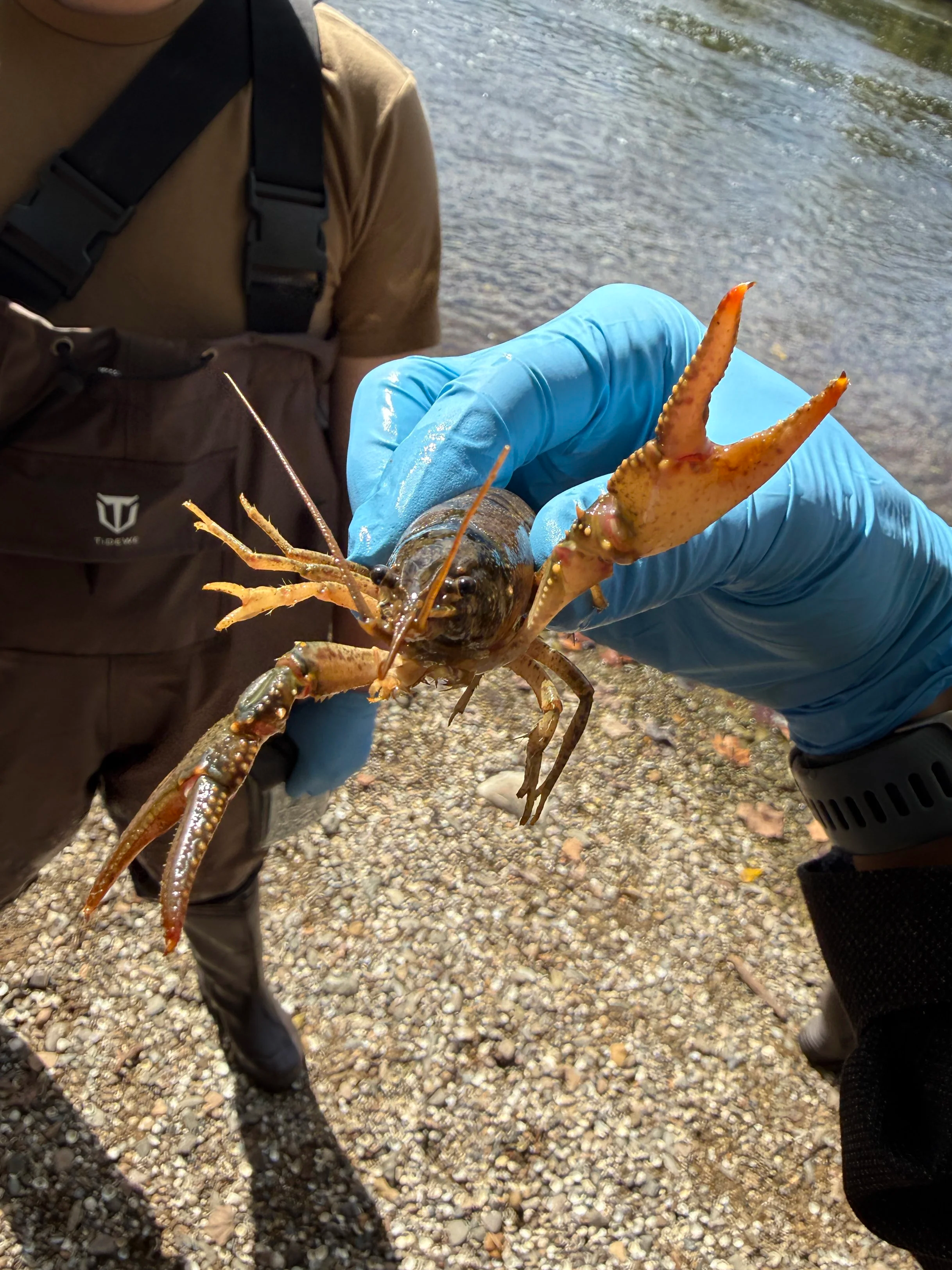Back to the basics.
For the seventh week at SMSC, we were joined by Josh Davis, one of the professors at SMSC, to lead us on a week of freshwater macro invertebrate sampling along the Shenandoah river and some tributaries that flow into it. Traditional freshwater invertebrate sampling, while rudimentary, provides some of the most powerful data for accurately judging a stream/rivers condition.
Our freshwater invertebrate sampling was time-based, one person would hold the net underwater directly next to and downstream to the person kicking up rocks and sediment, and after 30 seconds, they would stop and record their findings on a data sheet.
Our first stop of the week was actually the week before at Sloan Creek, a small creek that runs next to Remount Rd. along the SCBI campus. Our sampling areas was at the bridge where the Appalachian Trail crosses over Sloan Creek. This location was quaint and small but yielded (thanks to the help and expertise of Jim McNeil) many interesting macro invertebrates such as a Giant Stonefly (Pteronarcyidae).
The second stop was at Hawksbill Creek, a tributary that begins in Shenandoah National Park and empties into the South Fork of the Shenandoah River. This location was quite urban and our sampling area was located directly under the Lee Highway bridge. At this location my partner David and I collected a massive Hellgrammite (Corydalidae) larva roughly two inches long.
Later in the afternoon after stopping at Hawksbill Creek, we made our way to Shenandoah River State Park where we did another round of sampling and toured their wastewater treatment plant.
For our last day of sampling we went to Seven Bends State Park along the North Fork of the Shenandoah River and sampled our only ‘unimpaired’ location according to the EPA. This location, while not only being beautiful, yielded a large diversity of macro invertebrates. We then continued to the Riverton Boat Landing on the North Fork of the Shenandoah River where diversity dropped significantly showing the effects that development has on macro invertebrate diversity. This trend continued at our last location Happy Creek in downtown Front Royal, which had the lowest recorded diversity for my team.
Macro invertebrate sampling, while arguably being not exactly innovative, still shows that basic sampling, which can be done by almost anyone, still yields important results. I believe that the innovation to be done in macro invertebrate sampling should not be in the methods themselves, but in the communication of the process to a mass audience. With the right campaign and advertising, macro invertebrate sampling could be communicated to a large audience to encourage them to go out and begin sampling themselves. Because the process is so simple, people can begin the process with little investment, but can provide data of extreme value for scientists to help determine stream health and water quality worldwide.
This crayfish (Cambarus bartonii) we found before our invertebrate collection wanted to say hi.

